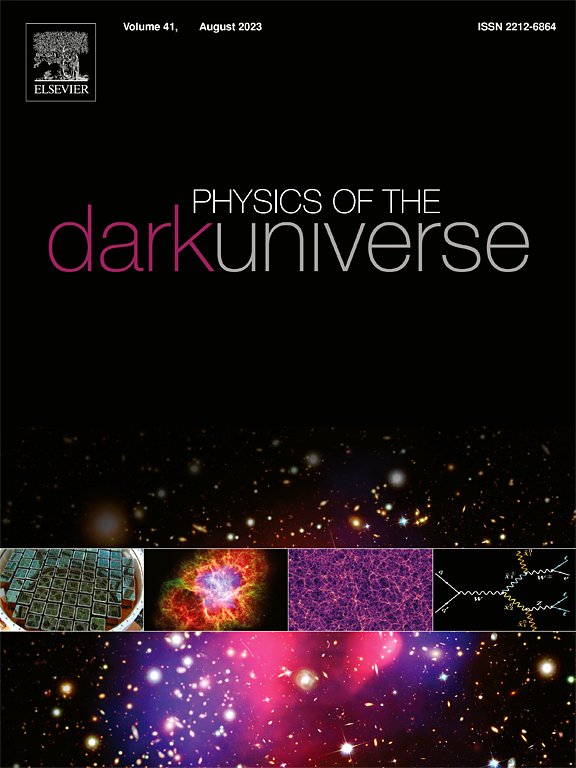Modified Kerr black holes surrounded by dark matter spike
IF 6.4
2区 物理与天体物理
Q1 ASTRONOMY & ASTROPHYSICS
引用次数: 0
Abstract
We study supermassive black holes (SMBH), surrounded by a dark matter (DM) spike, that can be found at the centers of Milky Way and galaxies and are accompanied by a specific kind of topological defect. The investigation is developed within the framework of Bumblebee Gravity with a global monopole (BGGM). The dark matter spike is described by a power-law density profile. Our main objective is to assess how the background arising from spontaneous Lorentz symmetry breaking and the presence of a global monopole influence the properties of the Kerr BH within the region affected by the spike. Using a spherically symmetric static BH with BGGM properties as the seed metric, we construct a non-rotating spacetime with a DM spike, resulting in a BGGM-motivated Schwarzschild-like BH by solving the modified Tolman–Oppenheimer–Volkoff equations (TOV). Next, we extend this approach to the case of a rotating spacetime resulting in the BGGM-motivated Kerr-like BH (BGMKLBH). This approach allows us to explore the spacetime structure, and the BGMKLBH shadows. Then, using available observational data for the DM spike density and considering the effects of BGGM on and SMBHs, we analyze the shapes of their shadows and put constraints on the BGGM parameter. Thus, we infer that the BGMKLBHs could be reliable candidates for the astrophysical BHs.
被暗物质尖峰包围的修正克尔黑洞
我们研究了被暗物质(DM)尖峰包围的超大质量黑洞(SMBH),这种黑洞可以在银河系和M87星系的中心找到,并且伴随着一种特定的拓扑缺陷。该调查是在具有全球单极子(BGGM)的大黄蜂重力框架内开发的。暗物质峰值可以用幂律密度曲线来描述。我们的主要目标是评估自发洛伦兹对称破缺和全局单极子的存在所产生的背景如何影响受尖峰影响区域内克尔黑洞的性质。利用具有BGGM性质的球对称静态黑洞作为种子度量,我们通过求解改进的Tolman-Oppenheimer-Volkoff方程(TOV),构造了一个具有DM尖峰的非旋转时空,得到了BGGM驱动的类史瓦西黑洞。接下来,我们将这种方法扩展到导致bggm驱动的类克尔黑洞(BGMKLBH)的旋转时空的情况。这种方法使我们能够探索时空结构,以及BGMKLBH的阴影。然后,利用现有的DM尖峰密度观测数据,考虑BGGM对Sgr A∗和M87∗SMBHs的影响,分析了它们的阴影形状,并对BGGM参数进行了约束。因此,我们推断BGMKLBHs可能是天体物理学黑洞的可靠候选者。
本文章由计算机程序翻译,如有差异,请以英文原文为准。
求助全文
约1分钟内获得全文
求助全文
来源期刊

Physics of the Dark Universe
ASTRONOMY & ASTROPHYSICS-
CiteScore
9.60
自引率
7.30%
发文量
118
审稿时长
61 days
期刊介绍:
Physics of the Dark Universe is an innovative online-only journal that offers rapid publication of peer-reviewed, original research articles considered of high scientific impact.
The journal is focused on the understanding of Dark Matter, Dark Energy, Early Universe, gravitational waves and neutrinos, covering all theoretical, experimental and phenomenological aspects.
 求助内容:
求助内容: 应助结果提醒方式:
应助结果提醒方式:


